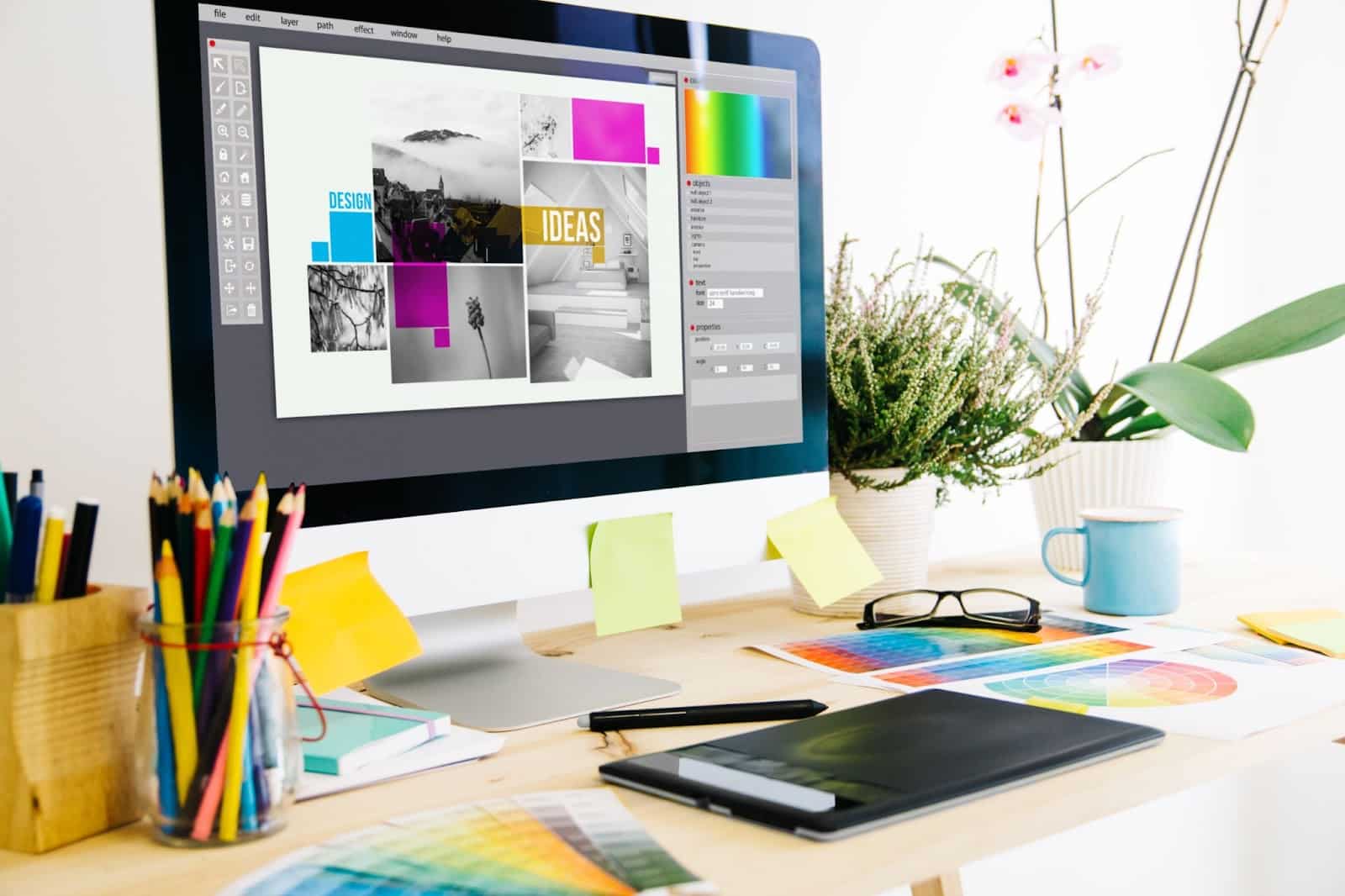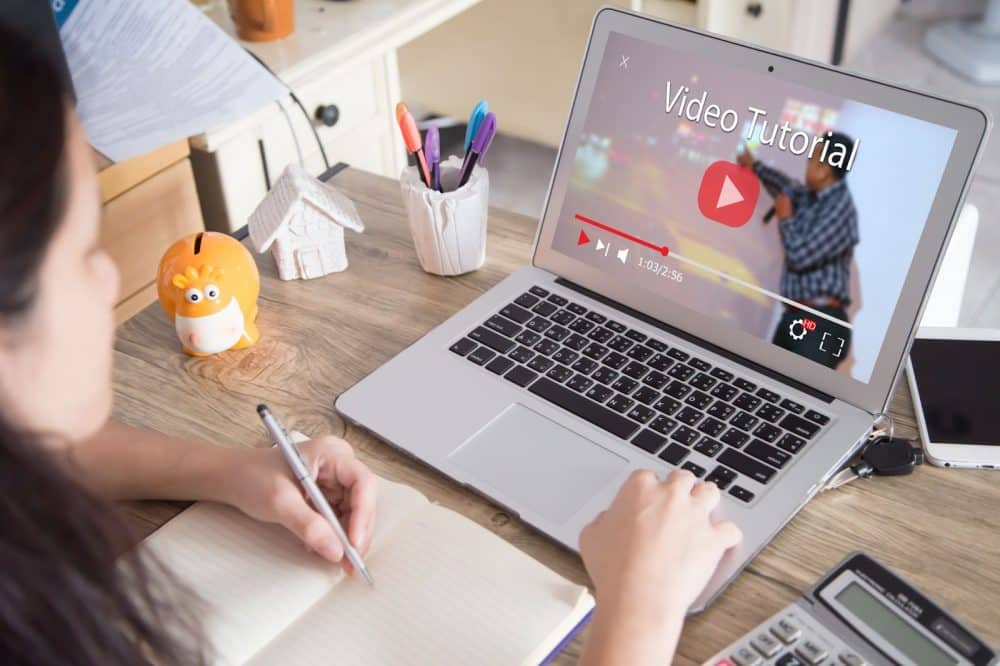
How To Market Yourself As A Freelance Graphic Designer

As a professional graphic designer, your Photoshop expertise and ability to design captivating media run deep. Regular Tuesdays for you are turning data into infographics, colorizing magazine covers, and creating fonts. But there’s one area of the graphic design field that doesn’t always come quite as naturally. And that’s graphic design marketing. So how do you establish your brand, reach your target audience, and build a steady client base? These 11 marketing strategies will help you turn your passion for graphic design into a full-time freelance career.
1. Decide On A More Specific Niche – Freelance Graphic Designer
Twentieth-century graphic design legend and the genius behind The Shining’s movie poster, Saul Bass, redefined how the world saw cinematic design. Graphic designer Paul Rand was the mastermind behind some of modern history’s most iconic corporate logos, including UPS and ABC.
Two of the most accomplished graphic designers in the last century, Bass and Rand had one thing in common:
- They exploited a single graphic design niche.
- Zeroing in on a smaller niche market allows you to fine-tune your design skills and roll out more targeted marketing campaigns.
Now it’s time to decide on a niche that inspires you, is where you excel, or has an untapped market. (Bonus points if your preferred niche fits all three criteria!)
Examples of graphic design niches include:
-
- Logo design
- Brand identity
- Package design
- UI (user interface) graphic design
- Sales funnels
- Marketing graphic design
- 3D animation
- Print design
- Mobile and web design
2. Build A Professional Website/Portfolio – Freelance Graphic Designer
One of the most overlooked aspects of freelance graphic design marketing is visibility. How will art directors, advertising firms, or even Fortune 500 companies find you on their hunt for a graphic designer? How can you prove your design mastery beyond the standard resume and cover letter? Simple: join your peers in creating a website.
A professional website that doubles as a portfolio can drive you to page one of Google’s search results (talk about free exposure!) and simplify the job proposal process. Among the best portfolio websites for graphic designers are Wix, Squarespace, and Weebly. All three have customizable portfolio-style templates where you can share a medley of your recent projects and evolve your brand. No coding is required.
Beyond the purely self-promotional angle, be sure to include the following:
- A mix of different projects to show your versatility
- Your current contact information
- An about me page detailing your expertise, niche, and experience
- A resume overviewing past projects you’ve completed
- A blog (we’ll talk more about that later)
And, of course, the user experience needs to be easy and well-designed. Your skills as a graphic designer should be self-evident in your own website, first and foremost.
Pro tip: Creating a website/portfolio is step one. Keep it updated as you complete more passion projects and pen new blog posts.
3. Become A Social Media Wizard – Freelance Graphic Designer
For a reason, aspiring graphic designers swarm to platforms like YouTube, Instagram, TikTok, and Pinterest. From photos to GIFs to videos, these online hubs are the perfect place to showcase digital masterpieces and rack up likes.
Of course, how you use these platforms ultimately determines the success of your social media marketing efforts.
What Should You Share On Social Media?
This is where the infamous 80/20 rule kicks in.
By this theory’s logic, 80% of your social media content should be helpful and engaging, while a much-slimmer 20% of your posts go toward self-promotion.
In other words, don’t bombard your followers with the mildly desperate, daily “Hire me for your graphic design work!” posts.
Instead, share:
- Infographics
- Original creations
- Basic photo touch-up tips
- Light-hearted photo edits or GIFs
The point here is to evoke some reaction or emotion that makes you memorable — whether that be “Wow, that’s awesome!” or pure laughter. People will follow you because it’s fun, but they’ll keep you in mind if they need some work done, too.
The More Professional Angle
You can also argue that TikTok and Instagram are casual platforms, which is true. For example, joining a more black-tie platform like LinkedIn makes sense if you’re among the 17% of designers working with Fortune 500 clients.
Just be sure to use whichever platform(s) you decide on to their fullest extent:
-
- Post regularly (daily, if you can).
- Respond to comments.
- Follow new followers back.
- Like others’ posts.
- Use hashtags to build brand awareness.
Subscribe To SelfGood
Get up to date perks and Gigworker news. Easy. Simply. SelfGood. Subscribe.
4. Create Eye-Catching Marketing Materials – Freelance Graphic Designer
The beauty of graphic design marketing is that your branding and marketing materials can make an accurate first impression.
Here’s why.
- For example, custom-branded business cards and flyers will prove your grasp of the seven elements of art (i.e., no clashing colors or awkward spacing).
- We don’t have to tell you how to craft designs that “pop.”
But what we can reveal are a few important marketing tips for those materials:
Variety
The first tip here is variety. Print off various marketing materials — from physical business cards and catalogs to flyers, brochures, and postcards — to tackle your advertising from all angles.
Continuity
Next comes continuity. Maintain a brand identity between all marketing resources, including the same colors, logos, and even minor details like typography.
Strategy
Finally, use your hot-off-the-press marketing materials strategically. Hand out business cards when you meet small business owners, hang up flyers at nearby strip malls, and have extra brochures ready in your car.
Read more: How To Choose A Design For Your Freelance Business Cards
5. Join Online Graphic Designer Job Platforms – Freelance Graphic Designer
In the early days of your freelance designer career, you’ll spend plenty of time seeking jobs and submitting proposals online. Newbie freelancers begin their journeys on global job platforms like Upwork. Create and verify your profile, scroll through current job opportunities, and submit attention-grabbing proposals to potential customers.
(Hint: Instead of vaguely searching “graphic design,” search for particular niches, like “social media marketing,” “PowerPoint,” or “logo design.”)
Dribbble and Behance are more art-centric job boards. On them, you can share your portfolio, apply to recently posted graphic design jobs, and even seek inspiration from your fellow artists.
6. Ask For Client Referrals
In 2020, a shocking majority of people (93%) trusted the brand recommendations of family and friends over advertising (38%), social media (51%), and even company websites (70%). Asking previous clients for referrals brings a sense of ingrained trust — and reduces advertising costs. Reach out to past graphic design clients (or employers if you recently left the traditional workforce) and ask if they know anyone needing a graphic designer.
But don’t stop there because 91% of young adults view online reviews as personal, trusted recommendations. Even if they don’t know someone with an unfilled graphic design gig, you can ask them for a testimonial to add to your site or to leave a glowing review on your Google My Business or Yelp page.
7. Form A Professional Network

The freelance world can be lonely, given the unspoken rule of “everyone for themselves.” Yet building a tightly connected network of fellow (non-graphic design) professionals can help you land more gigs and collaborations.
Whether you’re attending networking events at your local chamber of commerce or chatting in online forums, try to build connections with:
- Content writers
- Copy editors
- Animators and motion graphics professionals
- Local small business owners
- Marketing professionals
- Directors and producers
- Freelance photographers and freelance videographers
- Web developers and web design professionals
- Other graphic designers in different niches
These newfound connections serve several purposes, including a mutual referral network and an ongoing source of inspiration.
8. Offer Freebies And Shareable Content
Freebies are where things may take a mildly controversial twist, and you probably sense where this is going. Some wannabe influencers will offer to pay you in exposure — but your power provider won’t accept that in place of cash.
So instead of offering custom projects at no cost, you can offer a few downloadable and shareable freebies on your social media or website, like:
- Vectors
- Fonts and typefaces
- Textures and patterns
- Design elements
- Infographics
- Templates
- GIFs
- Photo edits
- Icons
- Stock photos
No matter which of these you use to entice potential clients, ensure they’re high quality and offer an authentic taste of your style.
9. Start A Blog
Blogging is still alive and well in the 2020s, and businesses that maintain blogs see an average of 67% more monthly leads. But the benefits of blogging run much deeper than a higher ROI. With a well-thought-out content marketing and SEO strategy, blogging could become your most valuable marketing tool as a freelance designer.
Why? For one, a blog is less about sales (at least directly) and more focused on being informative. A “cold lead” — or a reader circling the top of the sales funnel — may not be ready to hire a graphic designer yet. But blog posts about the pros and cons of rebranding or how to create a logo with Illustrator will turn you into a trusted industry source who isn’t asking for anything in return … yet. Blogs also draw more traffic to your website (with a keyword strategy) and can gently nudge visitors through the sales funnel until they become paying clients.
10. Post Online Tutorials

Piggybacking off that last point, online tutorials are another great way to fulfill the role of “hero” for those needing a graphic designer’s expertise. For example, you can post a YouTube video explaining how to combine layer masks in Adobe Photoshop. Or share a quick TikTok video detailing creating simplistic social media graphics or ad banners in Canva. This easy-to-understand, follow-along videos will beef up shares and solidify your reputation as a knowledgeable graphic designer, which you are.
11. Try Your Hand At Email Marketing
(Psst, this is where networking with writers will come in handy!)
Email marketing is one of the most effective methods for generating leads and maintaining at-a-distance contact with future clients. But before you tap “send,” we’ll fill you in on what you need to know:
How To Build Up Your Email Subscriber List
Easy — offer something in exchange for their email address. That could include gated content on your website (like an ebook explaining basic graphic design for newbies), a pop-up offering a discount on their first project, or even something as simple as a social media giveaway.
What Types Of Emails To Send And How Often
As with most marketing strategies, more is not always better in the email marketing world. Flooding inboxes with daily emails or sales pitches is a surefire way to lose subscribers or crash land in spam folders. Generally, 2–3 marketing emails per month is the unofficial sweet spot for keeping clients within arm’s reach without completely overwhelming them. It’s also equally important to add variety to your email marketing tactics.
Your emails should be a blend of:
- Brand awareness
- Newsletters
- Design service updates
- Promotions
- Event Invitations
- Informational
Conclusion – Freelance Graphic Designer
Graphic designers will argue until the end about minimalism vs. ornamentation (if you know, you know), but there’s no single right way to market yourself as a graphic designer. Digital marketing, face-to-face interactions, and even blogging — when done right — can land you more paying gigs and turn this part-time hobby of yours into a full-time freelance career.





